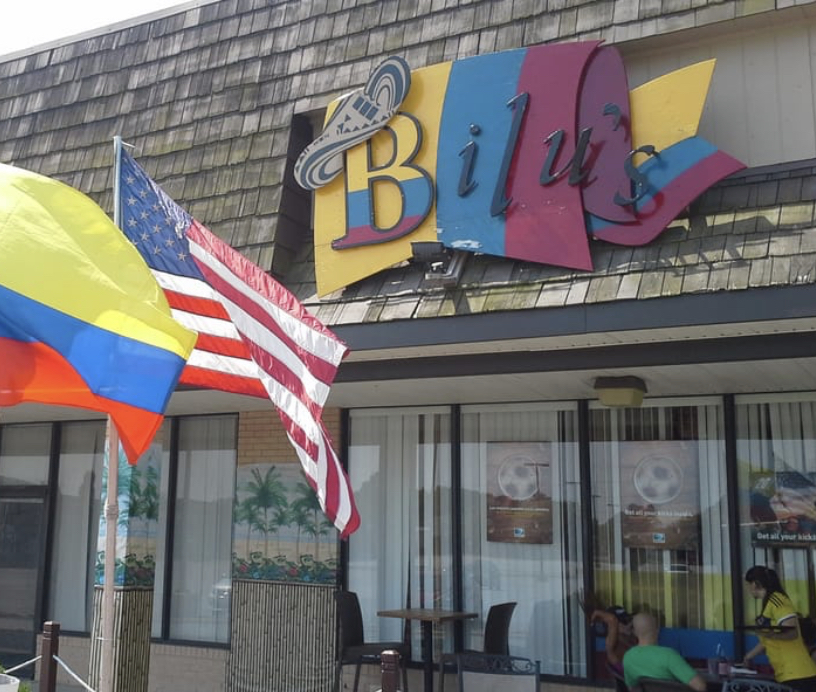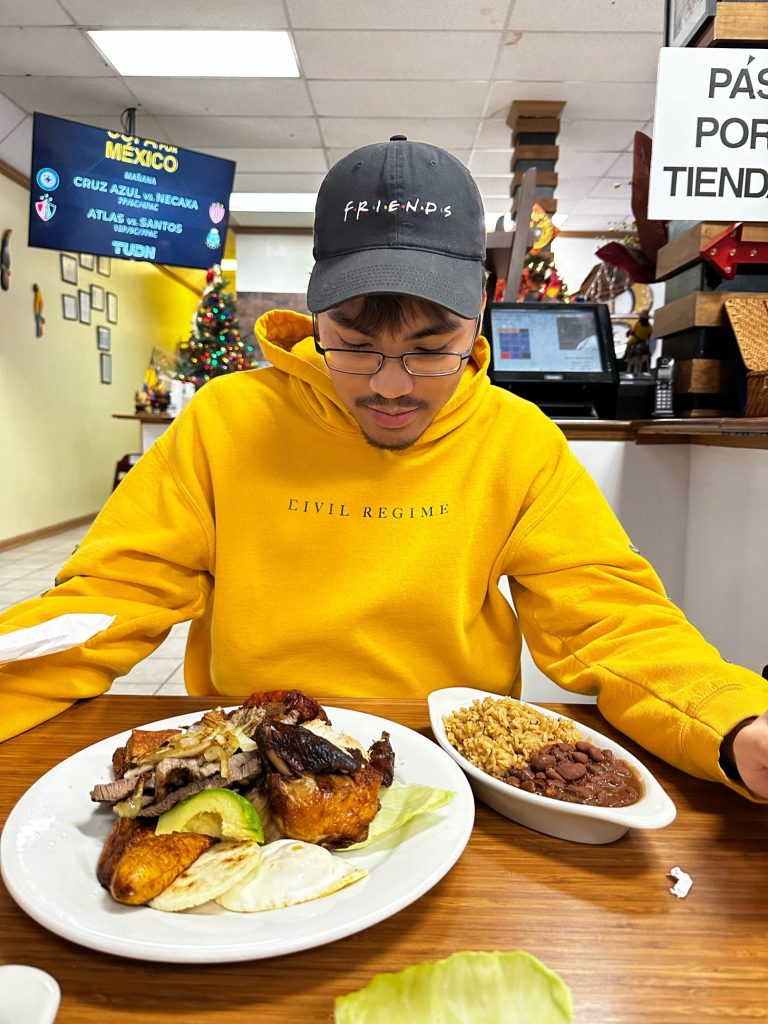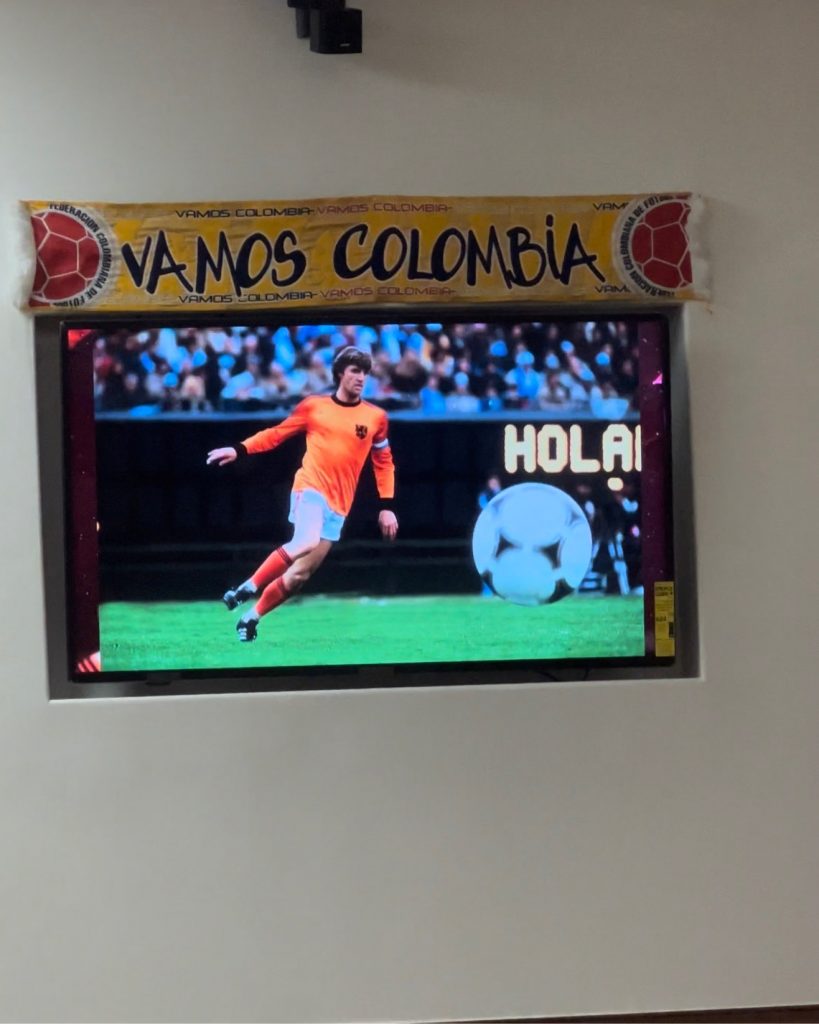Interpretive, Interpersonal, and Presentational Modes of Communication
Exploring Culture
Culture is an essential part of learning a language. For this semester, the digital platform Lingro Learning and the course Contraseña have helped me learn Spanish in an interactive and engaging way. Contraseña provided activities to learn Spanish in multiple areas of culture, such as Family, Food, Lifestyle, and Work. One activity instructed us to describe our favorite food in Spanish and discuss the influences that dish has on our life. Alongside this activity are personal accounts from individuals living in Hispanic countries like Argentina, Bolivia, and Chile performing the same activity, which allowed me to understand the differences and similarities between my culture and theirs. For example, living here in the United States, I love American food like hamburgers. Grilling hamburgers and watching American football with friends and family on weekends is part of American culture. In other Hispanic cultures like Argentina, they do something different, they make empanadas and carne asadas, but they also share this with friends and family. Contraseña has provided me with information that gave me a deeper understanding that even though we may have many cultural differences, like food, there are also aspects, such as bonding with family and friends, that link our cultures together.
Another very useful tool that helped me learn the Spanish language and culture is TalkAbroad. TalkAbroad is an online telecommunications service that connects language learners with locals worldwide to have meaningful conversations. With TalkAbroad, I could communicate with people from Hispanic countries like El Salvador and Colombia and talk about things like lifestyle and work, which has also provided first-hand insights into the culture.
https://www.talkabroad.com/about
Engaging in Communities
Language is just words that are either spoken or written. The people who use it to communicate are what give language meaning and how they incorporate it into everything they do in life is what forms an essential part of the culture. To effectively learn how to communicate using Spanish, it is important to engage with communities that use it to understand how it transcends culture.
I love food, and the simplest way to immerse myself in Hispanic culture and community is through cuisine. I love eating at Hispanic restaurants run by families that stay true to their traditions and culture. One of my favorites is Bilu’s here in Virginia Beach. Bilu’s is a Colombian restaurant that cooks authentic Colombian cuisine. Every time I eat there, it is a wonderful experience because there are so many Colombian natives that eat there and watch football. It is a perfect way to interact and practice my Spanish by conversing with people there about sports and their experiences living in Colombia.
Interpersonal Communication
Activities:
- TalkAbroad 1 (La familia) – I conducted a 15-minute telecollaborative conversation using TalkAbroad, focusing on self-introduction and introducing my family members in Spanish to my conversation partner.
- TalkAbroad 2 (La buena salud y ¿Qué comiste ayer?) – I conducted a 15-minute telecollaborative conversation using TalkAbroad, focusing on topics related to a healthy lifestyle, such as diet, exercise, and activities. The discussion also included food,
In the first TalkAbroad conversation, I was a bit nervous because it was my first time conversing with someone in Spanish for 15 minutes straight. There were many things on my mind, like if I would make a mistake, forget my vocabulary, not understand my conversation partner, and if I could respond with something that made sense. Having to do it for the first time for me, what was difficult was the expectation I had placed on myself. I wanted it to be perfect and as natural as possible when in reality, I am just learning, and it is normal to make some mistakes. To overcome this in my second conversation, I just relaxed and reminded myself that people could make mistakes in normal conversations. I just spoke more confidently and took my time to think out what I wanted to say, which improved the way I communicated in Spanish, and I can say I did pretty well. I have learned from both that I could speak confidently in Spanish but need to improve my listening skills because one of my main problems was responding because sometimes I did not comprehend my partner well. I would continue to practice speaking Spanish out loud to improve my confidence and listen to more Spanish videos or conversations to enhance my comprehension next time.
Presentational Speaking
Activities:
- I created two video presentations. For this activity, I made one video presentation introducing the members of my family and another video introducing my favorite dish and how to make it.
Creating a video presentation about my family was the first activity involving speaking entirely in Spanish. For me, speaking Spanish is easier than writing it. My primary language is Tagalog, which is quite similar to Spanish, so the pronunciation of certain words is almost natural. One of my main issues when learning to speak Spanish is that although it is similar to Tagalog, there are also big differences, like how Spanish does not enunciate the H sound. Because of habit, I always mispronounce words that start with the letter H in Spanish. Especially in the activity when introducing my family, I often pronounce the Spanish word for brother, “hermano” with an H. To overcome this, I kept practicing speaking Spanish out loud and repeating words I often mispronounced. For my second presentation, I made a video discussing my favorite Filipino food, Lumpia, and how to make it. In the second video, I am much more confident and speak a little better than in the first, and I believe it is due to practice and always speaking Spanish out loud so I can hear and correct myself.
Presentational Writing
Activities:
- I created a flyer for a club. For this activity, I made a flyer about the Latin Dance Club. Since I made the flyer to attract fellow students, I used non-formal Spanish commands.
- I created an Infographic about a health-related topic. For this activity, I made an infographic about the common cold. To make the infographic credible and professional, I used formal Spanish commands.
Creating a flyer for a club is the first activity I have done that involved writing in Spanish. For me, writing in Spanish is more complicated than speaking it. The Spanish language uses accent marks to emphasize certain syllables in words that can change its definition. It also uses unique punctuation rules for denoting questions and exclamatory phrases. Although I enjoyed the first activity, I made many mistakes because I kept forgetting to place the appropriate punctuation and accent marks. But as goes with everything, practice makes perfect. As I continue to write class notes in Spanish, I have become familiar with using punctuation marks correctly and applying accent marks on familiar words. This familiarity helped me overcome my early struggles when writing in Spanish. The second writing activity I did was creating an Infographic. Doing this activity was easier than the first because I was more familiar with and comfortable writing in Spanish. I have realized that the only way to improve is to keep on writing.
FlyerProyecto-Una-infografia-Cruz
Interpretive Listening
Activities:
- Listening to Spanish Conversations from the Youtube Channel “Spanish Playground.”
For me, it is essential to continue learning even outside the classroom. To improve my active listening skills and how well I can understand Spanish, I would listen to videos on Youtube. One specific channel is Spanish Playground. This channel has several conversation videos for beginners to more advanced learners that help improve Spanish comprehension and concepts. These videos reinforced my understanding of conjugating Spanish verbs and using reflexive and preterite verbs. It also helped me increase my vocabulary. Through these listening activities, I have become more conversational in Spanish by remembering phrases instead of just words.
Interpretive Reading
Activities:
- Reading news articles in Spanish form Elpais.com
To improve my reading and writing skills in Spanish, I would read news articles from Spanish websites. One specific website I go to is Elpais.com.
Elpais.com is an online Spanish newspaper that covers news worldwide and is written in Spanish. What I find interesting is that I have learned that there are a lot of words that have English cognates. This helps me improve my vocabulary by having to encounter a lot of new words. Reading words and phrases repetitively helps me remember how to construct sentences and where to put proper punctuation and accent marks, which improves my writing skills.



